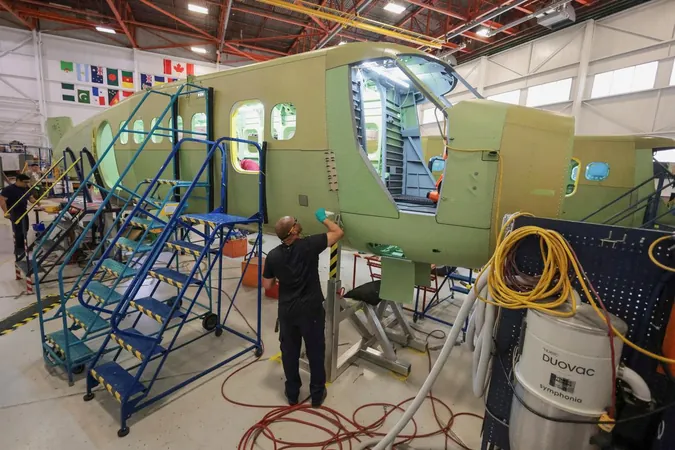
Sky Warriors: De Havilland Canada's DHC 515 Takes Flight Amidst Rising Wildfire Threats
2025-09-11
Author: Nur
At the bustling Calgary International Airport, a game-changer in wildfire management is on the horizon. De Havilland Canada is hard at work on its revolutionary DHC 515 waterbomber, the first aircraft specifically engineered to scoop water from lakes, rivers, or oceans and unleash it on raging wildfires.
As wildfires continue to ravage landscapes, the need for this amphibious aircraft has never been more pressing. With roots tracing back to the late 1960s, the DHC 515 inherits a lineage of success, stemming from the original Canadair CL-215 and its successor, the CL-415, both of which have been essential tools in firefighting across the globe.
Equipped with state-of-the-art enhancements in avionics, water-drop systems, rudder control, and air conditioning—De Havilland Canada’s Vice President, Neil Sweeney, highlights the technological leap forward that the DHC 515 represents.
Pilots like Scott Blue, who currently operates a CL-415 with Bridger Aerospace in Bozeman, Montana, rave about the aircraft's performance, describing it as a "pilot's airplane." He emphasizes its agility and the robust Pratt & Whitney engines, allowing rapid escapes from danger while also enabling precise water drops over wildfires.
Before each drop, the DHC 515 gracefully skims the water's surface, deploying two narrow probes that swiftly fill its tanks with 1,400 gallons (5,443 kg) of water in just 8 to 12 seconds. After releasing its payload, it zooms back for another refill. "If you’re tackling a forest fire near a water source, you can refill and deploy every two to three minutes," says Blue, who recounts instances of crews completing as many as 80 drops in a single four-hour window.
These waterbombers play a crucial role, dropping water directly onto flames to provide vital support to ground crews, while retardant markers are dropped by other aircraft to impede the path of the blaze.
With 225 CL-215s and CL-415s manufactured before Bombardier halted production in 2015, the demand for updated models surged. Production of this line was transferred to Viking Air in 2016, ultimately evolving into the DHC 515.
The market is ripe, with De Havilland Canada estimating a need for between 250 to 350 of the new aircraft. European nations have already expressed urgency, seeking to modernize and expand their firefighting fleets. Currently, De Havilland has secured 31 orders, including 22 from countries like Greece, Spain, and Italy, and future inquiries hint at a rapidly filling order book.
"Expect this to be a very full order book in no time," Sweeney confidently predicts.

 Brasil (PT)
Brasil (PT)
 Canada (EN)
Canada (EN)
 Chile (ES)
Chile (ES)
 Česko (CS)
Česko (CS)
 대한민국 (KO)
대한민국 (KO)
 España (ES)
España (ES)
 France (FR)
France (FR)
 Hong Kong (EN)
Hong Kong (EN)
 Italia (IT)
Italia (IT)
 日本 (JA)
日本 (JA)
 Magyarország (HU)
Magyarország (HU)
 Norge (NO)
Norge (NO)
 Polska (PL)
Polska (PL)
 Schweiz (DE)
Schweiz (DE)
 Singapore (EN)
Singapore (EN)
 Sverige (SV)
Sverige (SV)
 Suomi (FI)
Suomi (FI)
 Türkiye (TR)
Türkiye (TR)
 الإمارات العربية المتحدة (AR)
الإمارات العربية المتحدة (AR)